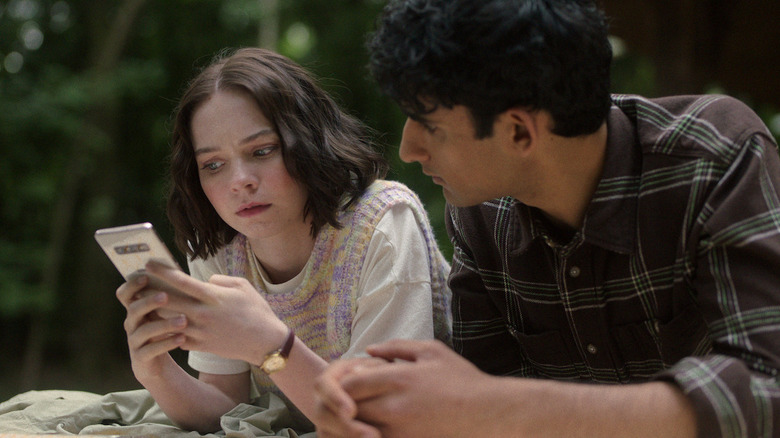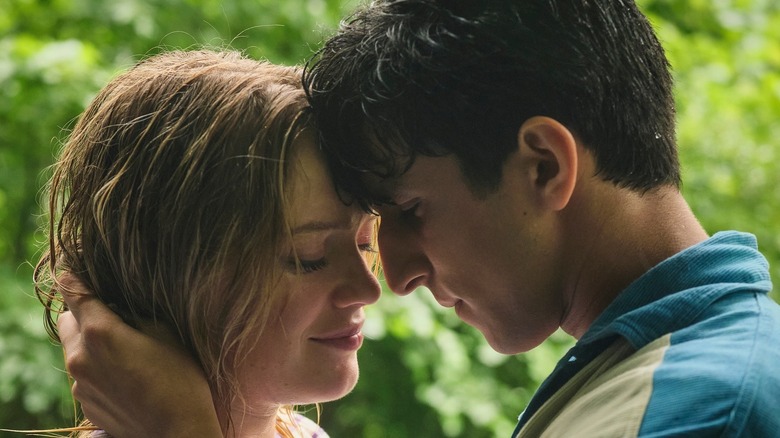A Good Girl’s Guide To Murder Review: A Wobbly Teen Whodunit With A Twisty End Game
Netflix’s digital library is filled with murder mysteries, crime shows, and whodunits, so what’s one more, right? That must have been the thinking of the streamer giant’s executives when they bought the international rights to the BBC’s six-episode series, “A Good Girl’s Guide to Murder,” which premiered in the U.K. nearly a month ago. Based on Holly Jackson’s novel of the same name, creator Poppy Cogan’s adaptation is exactly the kind of series that fits Netflix’s profile: a short and quickly bingeable whodunit about high-schoolers, mainly concerned with puzzling plot twists rather than characterization. It’s a show full of forgettable characters, yet one that offers an appealing melancholy vibe, complicated romances, and an intriguing murder case that gets more complicated with every episode. It’s “true crime lite” (even if it’s fictional) for the summer — and nothing more.
Pippa “Pip” Fitz-Amobi (“Wednesday” werewolf Emma Myers) is a 17-year-old student living in the fictional English town of Little Kilton. The murder of local beauty Andie Bell (India Lillie Davies) by her boyfriend Sal Singh (Rahul Pattni), who later died by suicide, made a splash there five years ago. Under the guise of a school project, Pip decides to reinvestigate the case since there are still multiple unclear details that just don’t add up. For instance, Bell’s body was never found, and her boyfriend’s testimony seems fabricated rather than genuine, given what a gentle and kind person he was known to be. Due to an early flashback, however, we know that Pip also has a personal attachment to both Andie and Sal as she was among the last people at school who saw them alive before tragedy struck. She believes Sal was falsely accused, so she reaches out to his brother, Ravi (Zain Iqbal), and the two join forces to find out what really happened to the couple while falling for each other in the process.
Little room for characterization
The main problem with “A Good Girl’s Guide to Murder” is that it wants to be both cute and serious but can’t quite pull it off. It lacks the depth and a consistent tone that thematically similar shows like “Pretty Little Liars,” “13 Reasons Why,” and “Looking for Alaska” managed to acquire and maintain without seeming unrealistic and sensationalist. Most teen characters here are broadly drawn and paper-thin, simply serving as plot devices instead of flesh-and-blood human beings we can relate to. That’s partly the fault of the largely plot-driven script that leaves little room for character-building, but also the cast’s inexperience clearly shows in the performances.
Even as the lead, it’s hard to imagine that Emma Myers’ Pip — a fragile, timid, and delicate girl — can pull off the kind of stunts in real life that she does in the series. Besides that, Myers and Zain Iqbal have zero romantic chemistry, so their intimacy feels flat and bland. Sadly, the other actors in the supporting roles don’t fare much better and have just about the same average screen presence — though they aren’t necessarily terrible, but simply lacking in charisma. If you want to see the story through here, you’ll need to ignore some of the show’s most glaring weaknesses.
A strong mystery and soundtrack
Getting the soundtrack and story right with sensitivity isn’t always an easy (or even possible) task considering some of the corny and silly dialogue we need to endure in the first half. To the show’s credit, though, where it really succeeds is with its use of music. “A Good Girl’s Guide to Murder” boasts an absolutely killer soundtrack that not only aptly captures the moody small-town vibe of the place and its youngsters but emotionally elevates many of the key scenes that aim to tug at our heartstrings. It’s sparsely used without being overwhelming or melodramatic. The same goes for the flashbacks that gradually turn the central case more gripping as new clues are revealed about Andie and Sal’s past, together and individually, with Pip standing in the middle wishing she could have saved them both.
Undoubtedly, though, “A Good Girl’s Guide to Murder” is the most effective and entertaining when it leans entirely on its plot twists regarding the murders and their possible suspects. The series excels at constantly shifting our suspicions about the real killer’s identity and potential motive by throwing in a few red herrings and pieces of the puzzle that don’t fit at first. Whether because of shifty drug dealers, secret affairs, or unseen police footage of a violent interrogation, you can never be too sure who to point a finger at. Though the writing and execution are hardly subtle about these misleading attempts, it’s satisfying to speculate about how they play into the big picture. And the writers surely deserve credit — even if they worked from a novel — for wrapping up every seemingly loose end that eventually becomes pivotal to the main storyline by the end of the six episodes.
The show also carefully handles sensitive topics such as drug abuse, infidelity, statutory rape, and murder. Though the series is aware that its biggest draw is the murder mystery — how could it not be? — that story never once feels exploitative or distasteful. In fact, every character, whether innocent or guilty, gets a thorough examination and enough screen time so the viewers can draw their own conclusions about them. Even the tiniest and seemingly most insignificant details help put all the moving pieces into their place. Ultimately, as in most mystery series, getting the story right is what ends up being the most important thing here. And despite its shortcomings, “A Good Girl’s Guide to Murder” is able to do just that in the end.
Season 1 of “A Good Girl’s Guide to Murder” hits Netflix on August 1.




